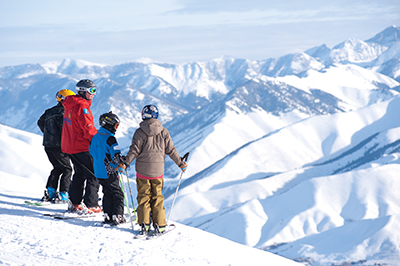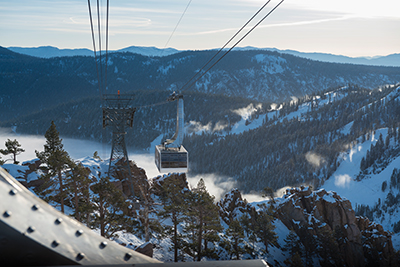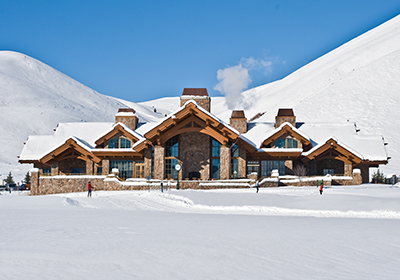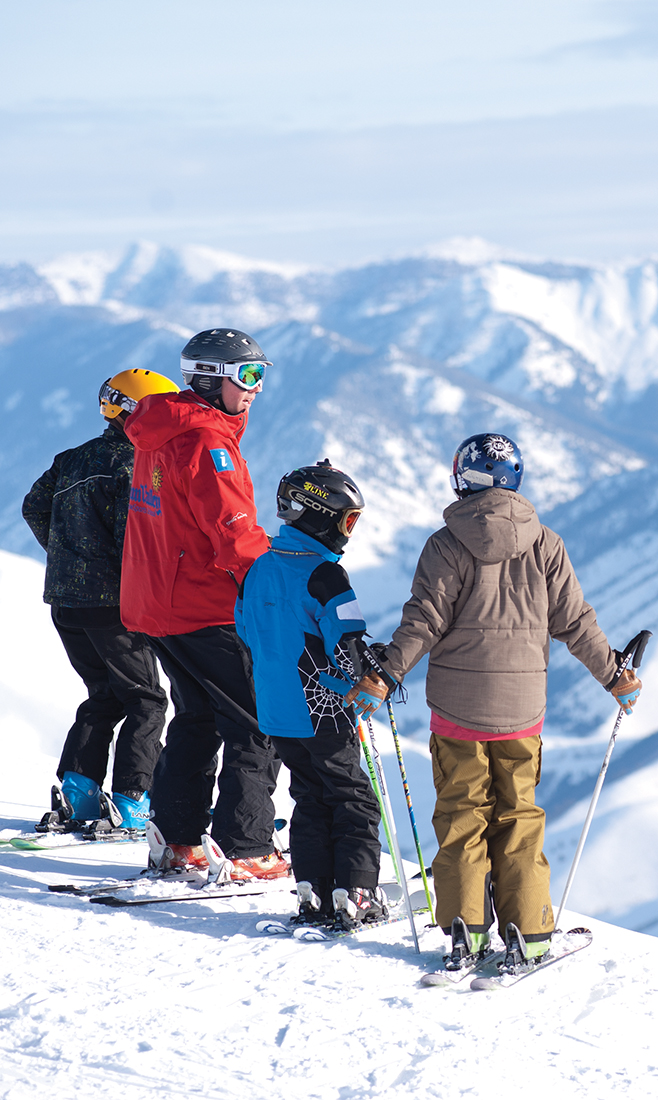 IT WAS THE No. 1 topic in Lake Tahoe that nobody wanted to discuss. Will we finally get decent snowfall in the Sierra this ski season? Will the 50/50 predictions for a super El Niño winter pan out for Northern California? Throughout the fall I asked pretty much everyone I know in the Tahoe ski industry these two questions, and the reply was pretty much the same: “Well, I sure hope so.” It was as if a positive response would somehow jinx the upcoming ski season.
IT WAS THE No. 1 topic in Lake Tahoe that nobody wanted to discuss. Will we finally get decent snowfall in the Sierra this ski season? Will the 50/50 predictions for a super El Niño winter pan out for Northern California? Throughout the fall I asked pretty much everyone I know in the Tahoe ski industry these two questions, and the reply was pretty much the same: “Well, I sure hope so.” It was as if a positive response would somehow jinx the upcoming ski season.
Already $1,578 in the hole on two consecutive seasons of unused Tahoe ski passes, I was leery of buying yet another barely used ski pass. Yes, skiing is expensive, but this is ridiculous. But if there’s a silver lining in this dark, snowless cloud, it’s that the ski industry has become well aware of the plight of its loyal customers and created some enticing incentives to keep us on the slopes.
Mega Pass, Mega Savings
Foremost among these incentives — and a result of the recent consolidation within the global ski industry — are the mega ski passes such as the M.A.X. Pass, Mountain Collective and Epic Pass, offering access to multiple resorts throughout North America, as well as sister resorts in Europe, South America, New Zealand and even Japan. The result is a paradigm shift in how skiers plan their winter vacations. It’s no longer about how many days you can squeeze into one resort, but how many resorts you can squeeze into a season.
“This year, for the first time, we purchased Mountain Collective passes,” says Mill Valley resident Kevin Knowles. “You get two free days of skiing at more than a dozen fantastic resorts, including Squaw and Alpine, Alta and Snowbird, Mammoth, Jackson Hole, Aspen, and Whistler. Sun Valley was added to the Mountain Collective this year and we love going there — especially in a poor snow year due to their great snowmaking capacity.” Knowles says he purchased the passes for his family of four for around $940 total, which included no blackout dates, 50 percent off additional lift tickets and 25 percent off resort lodging. “We even got a bonus third free day at Squaw and Alpine, so even if we end up skiing only a handful of days at Tahoe this winter, the pass will pay for itself.”
 Ski City
Ski City
With its recent acquisition of Park City ski resort in Utah, Vail Resorts has made its Epic Pass one of the best bargains for the 2015–16 ski season. The price of a single-day Park City lift ticket is currently $122, which makes buying an $809 Epic Pass — getting you into Heavenly, Northstar and Kirkwood — almost a no-brainer if you plan on skiing more than seven days this season.
“The strength of the Epic Pass,” says Margo Van Ness, senior manager of communications at Park City, “is that guests can gain access to not only Tahoe, Utah, Colorado and the Midwest, but also international partners.” In a clever marketing tactic, Vail Resorts hosted The Epic Race in 2013–14, a season-long challenge to ski all 26 resorts spread across four countries, with the top 10 winners receiving lifetime Epic passes.
Where to Go
So now that you have your shiny new pass to all these great ski resorts throughout the states and abroad, the next question is “Where should I go?” Some factors you’ll want to take into account are the ease of getting there — hint: look for nonstop flights — the quality of the snow (and snowmaking equipment), and the après-ski scene. I’ve been to most of the major resorts in the western U.S. and have great things to say about all of them, but three of my favorites are Park City, Steamboat and Sun Valley, all accessible via nonstop flights from SFO, with quick shuttle service to the resorts, awesome ski terrain and plenty to do after the skiing is done.
Park City Mountain Resort (Epic Pass) is the easiest of the three in terms of travel. It’s a two-hour flight from SFO to Salt Lake International, then a brief 35-minute drive via All Resort Express shuttle service (SLC is also the only airport where my luggage usually arrives at the carousel before I do). This year Vail Resorts invested more than $50 million to combine Park City and Canyons resorts to create Park City Mountain Resort, the largest ski area in the U.S. with 7,300 acres of skiable terrain, 300-plus trails and 41 lifts. Park City has an average annual snowfall of 411.1 inches, 18 times more than the national average, plus hundreds of hotels and condo units in every price range. (Tip: go with Stein Erikson Lodge’s giant suites for families and the übercool Main and Sky for couples.)
 I used to work at the Steamboat Ski Resort (M.A.X. Pass) in Colorado, and I still dream of skiing through the aspens there — it’s a special place. Steamboat offers an entire mountain range of skiable terrain: 165 trails spread over 2,965 acres of the lightest, sweetest Champagne Powder in Colorado, with an average of 349 inches per year. And yes, getting there is easy, with direct flights from SFO to Hayden Airport via United Express and a quick 30-minute shuttle ride via GO Alpine. Lodging ranges from condos and luxury hotels to budget-friendly motels and single-family home rentals, but for skiers the Steamboat Grand’s ski valet service makes it my top choice.
I used to work at the Steamboat Ski Resort (M.A.X. Pass) in Colorado, and I still dream of skiing through the aspens there — it’s a special place. Steamboat offers an entire mountain range of skiable terrain: 165 trails spread over 2,965 acres of the lightest, sweetest Champagne Powder in Colorado, with an average of 349 inches per year. And yes, getting there is easy, with direct flights from SFO to Hayden Airport via United Express and a quick 30-minute shuttle ride via GO Alpine. Lodging ranges from condos and luxury hotels to budget-friendly motels and single-family home rentals, but for skiers the Steamboat Grand’s ski valet service makes it my top choice.
I love the Sun Valley Resort (Mountain Collective Pass) in Idaho so much I even drove there once from Sacramento just to go skiing for a few days (never again). If you want guaranteed snow — 555 snow guns blanketing 78 percent of groomable terrain — and an 80 percent chance of sunshine, well, they call it Sun Valley for a reason. Two mountains, Bald and Dollar, separate the beginners from the advanced, so there’s rarely a lift line. Eighteen lifts service 121 runs over 2,154 skiable acres, and 910 total guest rooms are all within walking distance of the entire resort. It doesn’t have the après-bar scene of Park City or Steamboat, but families love it here. Friedman Memorial Airport in Hailey, Idaho, is just 14 miles from the resort, with nonstop United flights departing daily December 17–March 28 and a complimentary guest resort shuttle from the airport.
Snow Guarantees
“Sure, this global ski pass thing is all fine,” you say, “but I grew up skiing Squaw.” Well, yes, so did I. And to keep you, me and the other Sierraphiles happy, the Tahoe Super Pass is flexible. As stated by the website, “Weather happens.”
Which is why they’ve increased the pass perks this year — including unlimited 50 percent discounts on lift tickets at all Mountain Collective resorts — and added a worry-free guarantee: if you don’t ski at least five days on your 2015–16 Tahoe Super Pass, they’ll credit you up to four days toward your 2016–17 pass, presumably offsetting your financial loss (but you better read that fine print very carefully).
Fellow Tahoe skiers, I feel your pain. But they say change is good, so perhaps it’s time to look into alternative vacation fund distribution. Hope for the best, of course (Lake Tahoe, is another 2010–11 powder season too much to ask?), but also consider the new multi-destination pass options — and new travel opportunities — available for the upcoming ski season.


